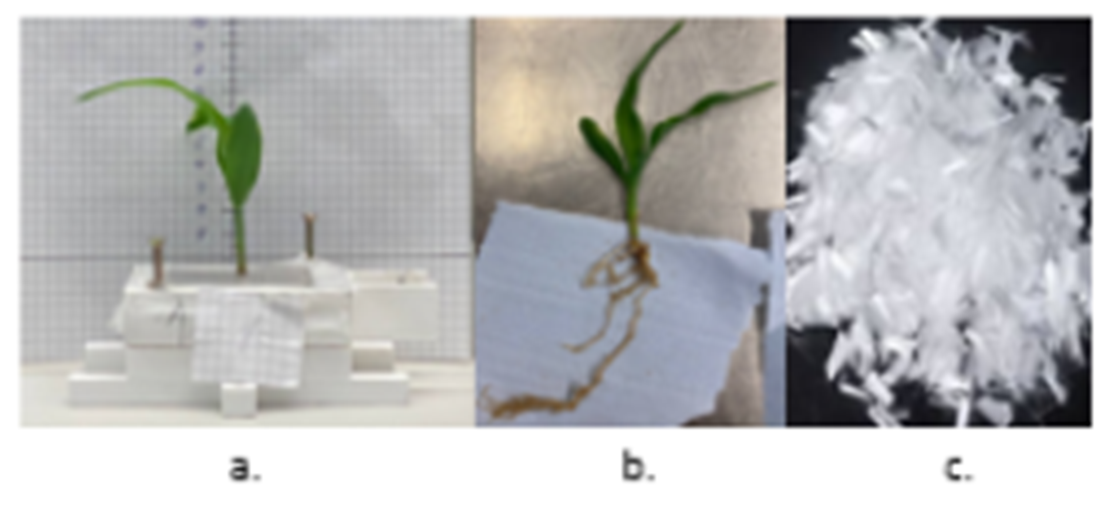Soil reinforcement is one of the most prominent and universal tools used in Civil Engineering right now. The simplicity of its implementation, coupled with the effectiveness and economic feasibility allowed it to spread all over the engineering world and infiltrate many different branches of it. Soil reinforcement is used in infrastructure, construction of flood defences and water management solutions, developments of areas that are to be used in heavy construction and as one of the methods of disaster effect prevention and mitigation. On the basis of the mechanisms that ensure soil stability, the practices of soil reinforcement can be divided into “systematically reinforced soil” (e.g., geotextile and geogrids) and “randomly distributed fiber reinforced soil”.The proposed project will be focusing on the latter group. In contrast with systematic reinforcement, fiber reinforcement contributes to soil strength in an isotropic manner, due to the random distribution.

Figure 1: a) Maize plant growing in a direct shear cell. b) Maize root structure. c) Polypropylene fibers.

Figure 2: Mechanical response at shearing of granular soil. Comparison between bare soil(black), root reinforced soil (blue), and fibre reinforced soil (orange).
Aim
The goal of this project will be answering to two main research questions:
- How effective is the root system of natural vegetation compared to flexible artificial fibers in reinforcing the shear strength of the soil?
- To what extent can natural vegetation root systems be considered a substitution to flexible fibers in reinforcing the shear strength of the soil?
Method
Experimental research within the Soil Micro Mechanics Chair @ University of Twente (NL). The student will be asked to design a protocol to have lab-scale samples of sand containing in-vivo plant roots and polypropylene fibers. Such samples will be subjected to mechanical tests (i.e. direct shear tests and triaxial tests). The ultimate goal is to pursue a parametric study identifying the link between, fibers length, root age, soil granulometry, water content, retention properties of the reinforced soils.



